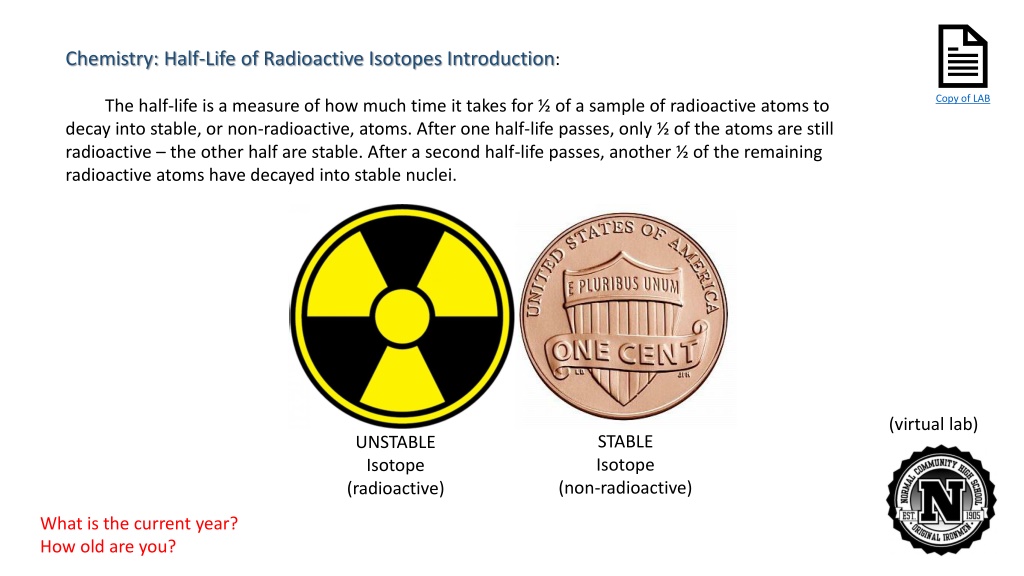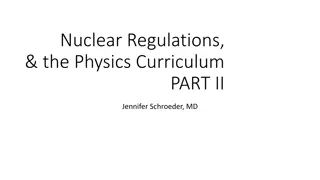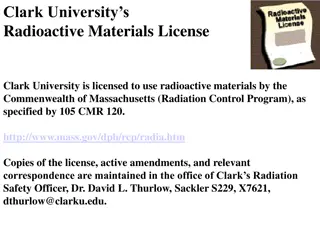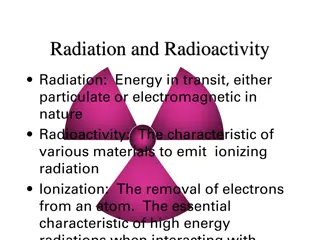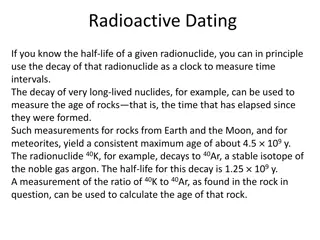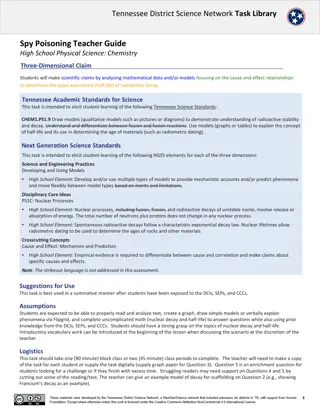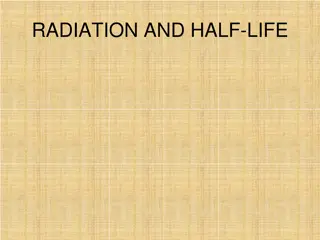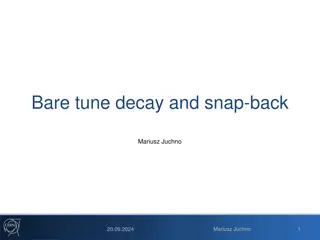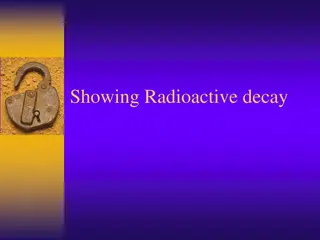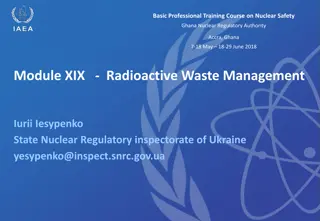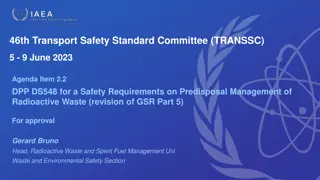Exploring Radioactive Decay: A Half-Life Lab Simulation
Explore the concept of radioactive decay through a virtual lab simulation involving strontium-90 (Sr-90) and yttrium-90 (Y-90) isotopes. Witness the decay process over multiple half-lives as unstable atoms transform into stable nuclei. Dive into the intricacies of half-life measurements and the vast scale of atomic quantities involved in this fascinating phenomenon.
Download Presentation

Please find below an Image/Link to download the presentation.
The content on the website is provided AS IS for your information and personal use only. It may not be sold, licensed, or shared on other websites without obtaining consent from the author. Download presentation by click this link. If you encounter any issues during the download, it is possible that the publisher has removed the file from their server.
E N D
Presentation Transcript
Document Chemistry: Half-Life of Radioactive Isotopes Introduction: Copy of LAB The half-life is a measure of how much time it takes for of a sample of radioactive atoms to decay into stable, or non-radioactive, atoms. After one half-life passes, only of the atoms are still radioactive the other half are stable. After a second half-life passes, another of the remaining radioactive atoms have decayed into stable nuclei. (virtual lab) STABLE Isotope UNSTABLE Isotope (radioactive) (non-radioactive) What is the current year? How old are you?
Graph of Radioactive Decay 0 1 2 3 4 (half-life) Each group needs 32 pennies. Place them on a desk in a 4 x 8 grid with heads up. Each heads-up penny represents one gram of radioactive strontium-90 (sr-90), which means you will start with 32 g of radioactive material. Each tails-up penny represents one gram of stable, non-radioactive yttrium-90 (Y-90). Sr-90 has a half-life of 28 years. Sr-90 KEY Y-90
Graph of Radioactive Decay 0 1 2 3 4 (half-life) A. One half-life passes. Turn over (to tails-up) of the pennies. Sr-90 KEY Y-90
Graph of Radioactive Decay 0 1 2 3 4 (half-life) B. Another half-life passes. Turn over (to tails-up) of the remaining Sr-90. Sr-90 KEY Y-90
Graph of Radioactive Decay 0 1 2 3 4 (half-life) C. Another half-life passes. Turn over the proper number of pennies. Sr-90 KEY Y-90
Graph of Radioactive Decay 0 1 2 3 4 (half-life) D. Another half-life passes. Turn over the proper number of pennies. Sr-90 KEY Y-90
Graph of Radioactive Decay 0 1 2 3 4 5 (half-life) E. Another half-life passes. Turn over the proper number of pennies. Sr-90 KEY Y-90
In our simulation, 32 grams of Sr-90 is equal to 220,000,000,000,000,000,000,000 pennies (assuming each penny represents an atom of Sr-90) More crazy calc s: The pennies would have a volume of 3.74 x 1021 inch3 or 8 x 1016 yards3. It would take 2.67 x 1016 pickup trucks full of pennies to hold this many pennies. Assuming a pickup truck can hold 3 cubic yards of pennies. In reality, 32 grams of Sr-90 is actually equal to 2.2 x 1023 atoms of Sr-90. It would take you many, many, many life times to turn over all those pennies. 5,500,000,000,000,000,000,000,000,000,000,000,000 grams of pennies A penny weighs 2.5 g. That means you would have 5.5 x 1036 g of pennies of Sr-90 if you had 2.2 x 1023 atoms of Sr-90. That mass is equal to > 6 x 1014 kilotons [ or 605000000000000000 tons]. In 560 years (20 half-life) you would still have 2.1 x 1017 pennies to turn over.
